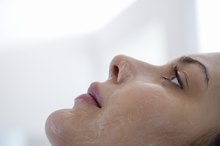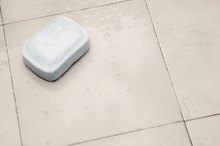What does fact checked mean?
At Healthfully, we strive to deliver objective content that is accurate and up-to-date. Our team periodically reviews articles in order to ensure content quality. The sources cited below consist of evidence from peer-reviewed journals, prominent medical organizations, academic associations, and government data.
The information contained on this site is for informational purposes only, and should not be used as a substitute for the advice of a professional health care provider. Please check with the appropriate physician regarding health questions and concerns. Although we strive to deliver accurate and up-to-date information, no guarantee to that effect is made.
What Are the Treatments for Excessive Swelling From a Chemical Peel?
**A chemical peel is the use of a chemical solution that burns off damaged skin cells on the face 1[2](https://www.aad.org/public/diseases/cosmetic-treatments/chemical-peels 'inline-reference::Chemical peels.
(n.d.).').
The purpose of a chemical peel is to rejuvenate your skin, giving it a more youthful appearance 12. There are various types of chemical peels that differ based on skin penetration depth 23. There are superficial peels, such as those made of alpha hydroxy acids, or AHA, medium depth penetration peels consisting of trichloroacetic acid, or TCA, and deep penetration peels, or phenol peels. Swelling is a common side effect of peels, particularly medium and deep penetration peels. Follow post-care instructions and see your doctor if you feel your swelling is excessive.
Who Performs
There are over-the-counter peels that you can buy yourself and do at home, but they have minimally effective AHA concentrations of 10 percent or below, according to the Patient's Guide to Chemical Peels 2[3](https://www.aad.org/public/diseases/cosmetic-treatments/chemical-peels#preparation 'inline-reference::Chemical peels: preparation.
(n.d.).'). Doctors can use AHA products that have concentrations between 30 and 70 percent. A doctor must also administer TCA and phenol peels, though phenol peels are not used often because of the risk of scarring and toxicity. Doctors monitor chemical peels closely for side effects, such as swelling 23.
- There are over-the-counter peels that you can buy yourself and do at home, but they have minimally effective AHA concentrations of 10 percent or below, according to the Patient's Guide to Chemical Peels 2[3](https://www.aad.org/public/diseases/cosmetic-treatments/chemical-peels#preparation 'inline-reference::Chemical peels: preparation.
- ( A doctor must also administer TCA and phenol peels, though phenol peels are not used often because of the risk of scarring and toxicity.
Swelling
A Chemical Peel for Enlarged Pores
Learn More
Swelling after a chemical peel is normal and might even be quite extreme [1](https://www.plasticsurgery.org/cosmetic-procedures/chemical-peel/cost 'inline-reference::Chemical peel cost. (n.d.).
')2.
Swelling after an AHA peel is minimal if present at all because it is so superficial.
Swelling after a TCA peel is more intense and continues to worsen for 48 hours after the procedure. Blisters might form on your skin then break open, further intensifying swelling, though this side effect is normal. Swelling is most intense after a phenol peel and might even cause your eyes to swell shut. In both types of peels, swelling should resolve in a few days. If you are worried that your swelling is worse than it should be, consult your doctor.
- Swelling after a chemical peel is normal and might even be quite extreme 1. ')
- Swelling is most intense after a phenol peel and might even cause your eyes to swell shut.
After Care
Following the appropriate aftercare instructions helps to minimize your swelling and enhance healing and recovery. After a TCA or phenol peel, soak your face daily, several times daily for phenol peels.
After soaking, apply ointment according to your doctor's instructions. To help reduce your facial swelling, elevate your head while lying. Don't put a cold compress or ice on your face without first talking with your doctor as the skin is vulnerable and sensitive. Avoid the sun if you are experiencing swelling so it doesn't further irritate or damage your skin.
- Following the appropriate aftercare instructions helps to minimize your swelling and enhance healing and recovery.
- Don't put a cold compress or ice on your face without first talking with your doctor as the skin is vulnerable and sensitive.
Complications
Chemical Peels & Hydroquinone
Learn More
Complications are rare if the procedure is done by a doctor. Complications that might cause swelling include blocked pores or a bacterial infection. Each of these conditions requires medical treatment. If you have an infection, your doctor might prescribe an antibiotic.
- Complications are rare if the procedure is done by a doctor.
- Complications that might cause swelling include blocked pores or a bacterial infection.
Related Articles
References
- Chemical peel cost. (n.d.).
- Chemical peels. (n.d.).
- Chemical peels: preparation. (n.d.).
- Mayo clinic Staff. (2016). Chemical peel: how you prepare.
- Arif T. Salicylic acid as a peeling agent: a comprehensive review. Clin Cosmet Investig Dermatol. 2015;8:455-61. doi:10.2147/CCID.S84765
- Nikalji N, Godse K, Sakhiya J, Patil S, Nadkarni N. Complications of medium depth and deep chemical peels. J Cutan Aesthet Surg. 2012;5(4):254-60. doi:10.4103/0974-2077.104913
- Arif T. Salicylic acid as a peeling agent: a comprehensive review. Clinical, Cosmetic and Investigational Dermatology. 2015 Aug 26;8:455-61. doi:10.2147/CCID.S84765
Writer Bio
Jackie Carmichael has been a freelance writer for more than 10 years. Her work has appeared in "Woman's World" and "American Baby" magazines. Carmichael is a licensed registered nurse and has worked in fields related to cardiovascular health and psychiatry. She also holds a Bachelor of Arts in journalism from The Ohio State University.









